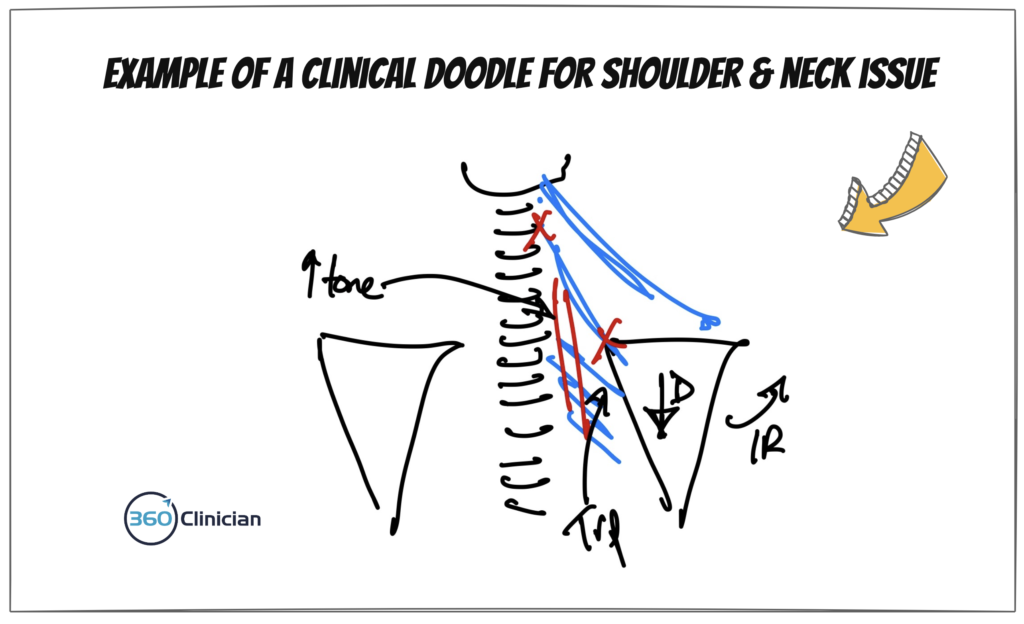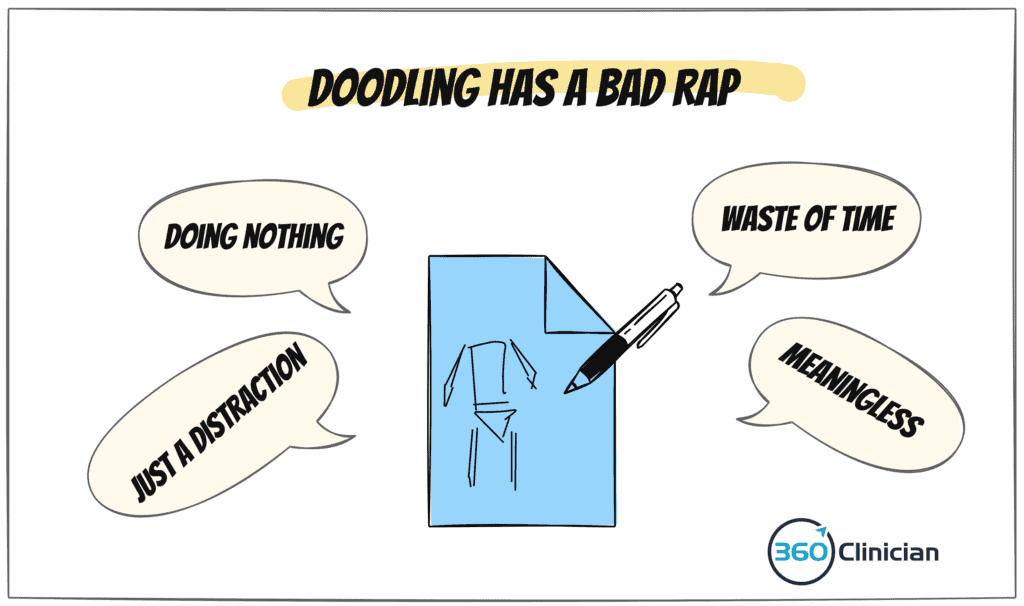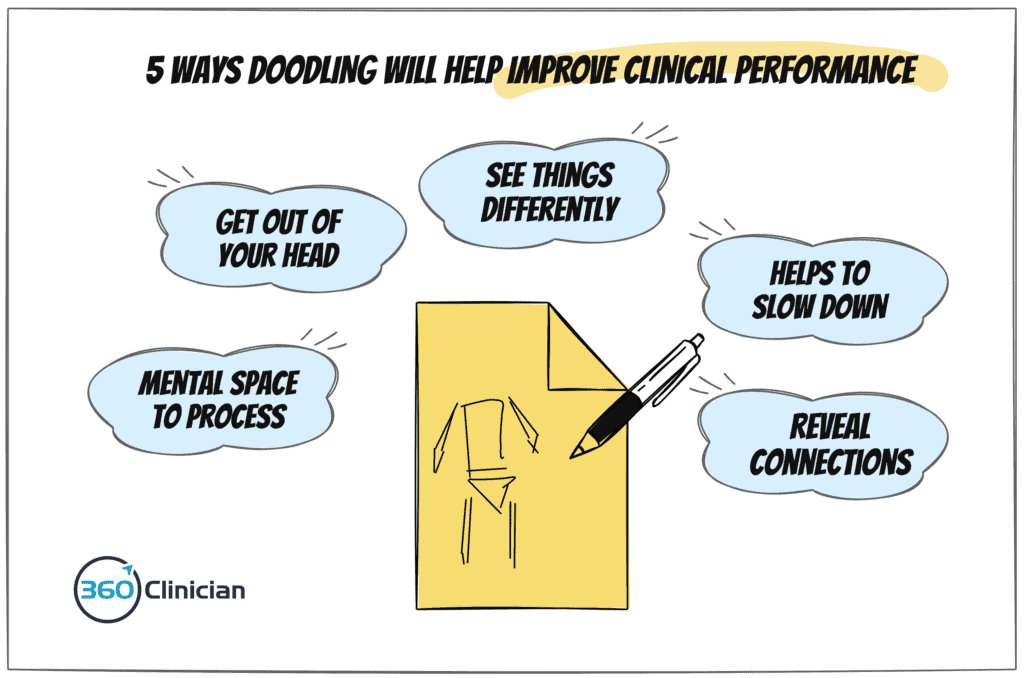I find that sometimes I get stuck.
Not unlike when I was in my teens and my brother and I got our parent’s 1987 Ford Taurus stuck on a forestry service road in the Cascade mountains. No matter how many times we tried to go forward and backwards we were stuck. (I’ll share more of that in my upcoming podcast on this topic!).
As physiotherapist’s getting stuck is a regular part of our clinical experience. It’s part of the job.
We’re problem-solving and troubleshooting with every patient we see. The problems we’re solving are complex and change regularly. Whether it’s establishing a diagnosis, or troubleshooting a patient that isn’t progressing, we need to figure out how to help get the best possible outcomes for patients.
It can be frustrating and tiring.
We need a way to gain clarity in our thinking.
Having a conversation with a colleague or peer can be a great way to gain clarity, but sometimes we don’t have access to talk to someone.
When we’re stuck in our thinking, it’s easy to believe that we just don’t have enough information to get us through. But I’ve found that more often it’s our ability to gain fresh perspective that helps us get unstuck.
But gaining perspective can sometimes seem elusive. The good news is I’ve found a simple way to help gain perspective and clarity that anyone can use.
You know what it is?
Doodling.
For many of us, doodling is simply a way to pass the time. However, what many of us don’t realize is that doodling can actually help improve our clinical reasoning skills.
Doodling has been a powerful tool in my own clinical toolkit to sharpen my thinking, improve my clinical reasoning, and accelerate problem-solving.

It’s more than a mindless activity. Doodling is a method that engages different areas of the brain to support concentration, memory and problem-solving (Andrade, 2009; Ainsworth et al, 2011).
What is Doodling?
It’s interesting when you look at the current definitions of doodling. The existing definitions of doodling don’t shine a positive light on this powerful technique. Merriam-Webster defines it as “an aimless or casual scribble, design, or sketch” while Wikipedia defines it as “a drawing made while a person’s attention is otherwise occupied.”

Sunni Brown, the author of the book Doodle Revolution, feels there is a lot missing with the definition of doodling and I agree. Her revised definition of doodling is that of “making spontaneous marks to help yourself think.”

What I love about her definition is that it is accessible to non-artists – anyone can make marks on a piece of paper. And I love the purpose of doodling – to help yourself think. I think that is the key – regardless of how one doodles (or how good a doodle looks), the key is to help you think.
We’re always thinking as clinicians, but there aren’t many things that we are using to help us think better, especially something that is accessible at any moment in our day.
5 Ways that Doodling Helps Improve Clinical Performance
Here are 5 ways that I’ve found doodling has improved my own clinical thinking and performance:
#1- It gives your mind space to process
I like to think of doodling as a form of journaling that is more visual and less structured. It’s a way to draw out thoughts and ideas in the moment.
It slows everything down.
It gives the mind space to pause, reflect, and process information without feeling pressure to come up with an answer right away.
Doodling is known to be an effective aid in problem-solving because it helps us to break away from traditional thinking ruts and opens us up to more creative solutions. Making marks on a piece of paper (or tablet), engages multiple centers of the brain allowing you to look at the problem from different angles and come up with innovative ideas that you might not have considered in the past.
#2- It helps you get out of your head
It’s easy to fall into the trap of mulling problems over in one’s head. Problems just keep running around in our brains without any progress or conclusion. It’s an inefficient and time-consuming process. There’s something transformative when we get our thinking out of our heads and onto a piece of paper. Fresh perspectives come much more quickly with doodling than going down the same thinking pathways.
#3- It helps you see things differently
To solve problems effectively we need to see things differently. I’ve found that doodling helps me see clinical situations in new ways. Externalizing key data points about a patient case can help you see potential connections more easily and quickly. The process of doodling allows some parts of our brains to relax so we can tap into other, perhaps less often used, areas of our brains which ultimately may help us see a problem from a different vantage point. I would argue that doodling regularly, will actually make you smarter, retain information better, and problem-solve more effectively.
#4- It helps you to slow down
Doodling is believed to stabilize arousal at an optimal level thus assisting in concentration and thinking (Andrade, 2009). A little creative pen-to-paper has been shown to reduce stress as measured by cortisol levels (Kaimal et al, 2016). If stress hormones are high, our ability to think gets clouded. In tomorrow’s newsletter, I will show you how I doodle in my clinical work to improve our clinical reasoning and problem-solving.
#5- It can reveal unexpected connections
When my mind is stuck, it’s easy to get fixated on one way of thinking, seeing or doing things. But when I’m doodling, I often find connections and ideas that I wouldn’t have come up with before. These unexpected connections can help me to build on my existing thought process and create a bigger picture.
When you doodle, you’re engaging in deep and important information processing. As Sunni Brown shares, it’s “connecting neurological pathways with previously disconnected pathways” and you’re “concentrating intently, sifting through information, conscious and otherwise, and…generating massive insights.”

Applying Doodling to Clinical Reasoning
There’s no need to have skill in drawing
First off, there is no requirement to have any gift or skill with drawing. Doodling is not about creating realistic impressions of your patients or their body parts. It’s about helping you think. The doodles you create are for you and you alone.
The outcome isn’t about how pretty it looks
We all have an inner critic and, unfortunately, it is alive and well when it comes to any artistic or creative endeavour. If you find yourself being critical of your doodles, gently remind yourself “This is not art. This is to help my thinking.”
Keep things simple
When doodling to solve clinical problems, I’ve found it helpful to keep the shapes and doodles simple. Simple stick figures and body parts are quick and require zero artistic flair.
So if you’re feeling stuck in your clinical work, give doodling a try. It’s worth it – trust me!


